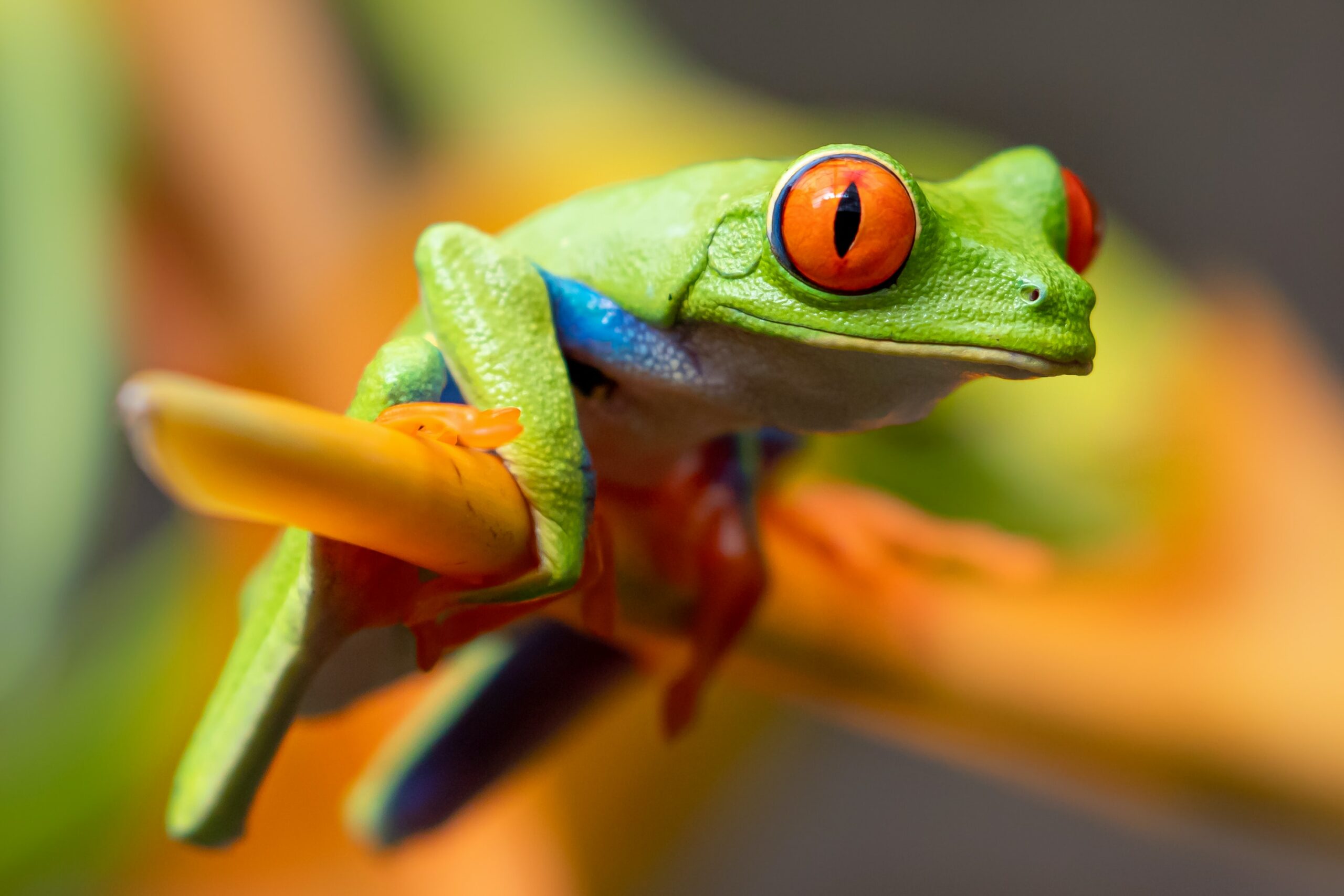Frogs are hoppy happy amphibians that belong to the animal kingdom, class Amphibia, and order Anura. With their unique life cycle and diverse species, the frog has been a favorite of children around the world.
Some frogs make intriguing pets while others are dangerous to be around. Hop along and follow this article to discover and learn more about the enchanting world of the frog, including characteristics, different types, and how they differ from toads.
Frogs are characterized by their smooth, moist skin, long hind legs built for jumping, and lack of a tail. They have short front legs used for movement on land and in water. The frog comes in a wide range of colors and patterns, helping them blend into their surroundings for camouflage. Their eyes are positioned on the sides of their heads, allowing them to see in multiple directions.
One of the unique characteristics of frogs is their ability to breathe both through their lungs and their skin. They have specialized skin cells called chromatophores that can change color to help them regulate body temperature and communicate with other frogs. The frog also has powerful hind legs, which allow them to leap and swim efficiently.
Types of Frogs
Frogs exhibit incredible diversity, with over 7,000 known species worldwide. Let’s explore some of the most common and popular types of frogs:
- Bullfrog (Lithobates catesbeianus): The bullfrog is a large frog species native to North America. Known for its deep croaking call, it is a proficient swimmer and has a voracious appetite.
- Tree Frog (Hylidae family): Tree frogs are small to medium-sized frogs that are excellent climbers. They have specialized toe pads that allow them to stick to surfaces, enabling them to inhabit trees and shrubs.
- Poison Dart Frog (Dendrobatidae family): Poison dart frogs are known for their vibrant colors, which act as a warning to potential predators. Some species of poison dart frogs possess toxic secretions on their skin, making them one of the most poisonous animals on Earth.
- Red-eyed Tree Frog (Agalychnis callidryas): The red-eyed tree frog is a visually stunning species with bright green bodies, red eyes, and blue and yellow markings. It is primarily found in Central America and is known for its striking appearance and loud vocalizations.
- Northern Leopard Frog (Lithobates pipiens): Native to North America, the northern leopard frog is named for its distinctive spots and markings. It is a semi-aquatic species commonly found near ponds, marshes, and wetlands.
With over 7,000 known species of frogs worldwide, it makes them one of the most diverse groups of amphibians. If you scroll down, you can see some of the varied frog species and some of the characteristics that make them unique.
What makes frogs unique?
Frogs are known for their incredible jumping abilities, which allow them to cover long distances quickly. They are also famous for their distinct vocalizations, or calls, which serve various purposes such as attracting mates and defending territories.
Frogs are excellent indicators of environmental health, as their permeable skin makes them sensitive to changes in water quality and habitats. This sensitivity makes them valuable bio-indicators, helping scientists monitor the health of ecosystems.
Frogs summary
The frog is a captivating creature with unique life cycles, enchanting calls, and remarkable adaptations. Their diversity of species, ranging from the giant Goliath frog to the minuscule Paedophryne amauensis, showcases the beauty and wonder of the natural world.
By understanding their characteristics, different types, and ecological roles, we can develop a greater appreciation for these charming hoppers and the ecosystems they inhabit.



































































